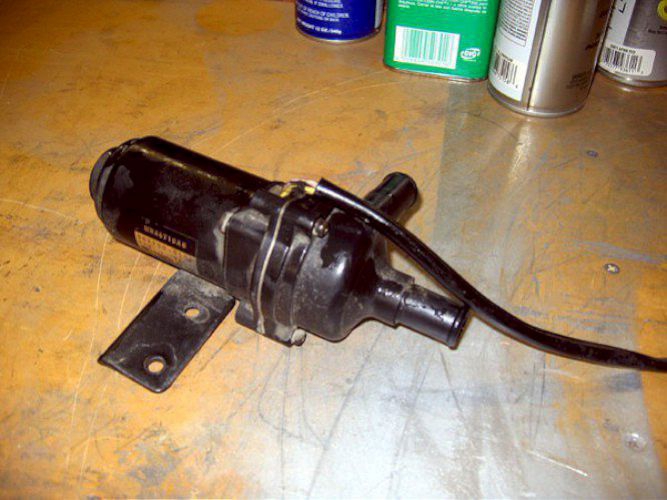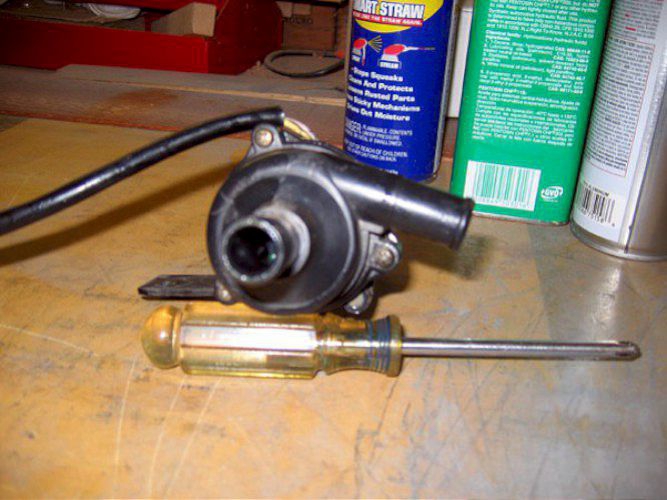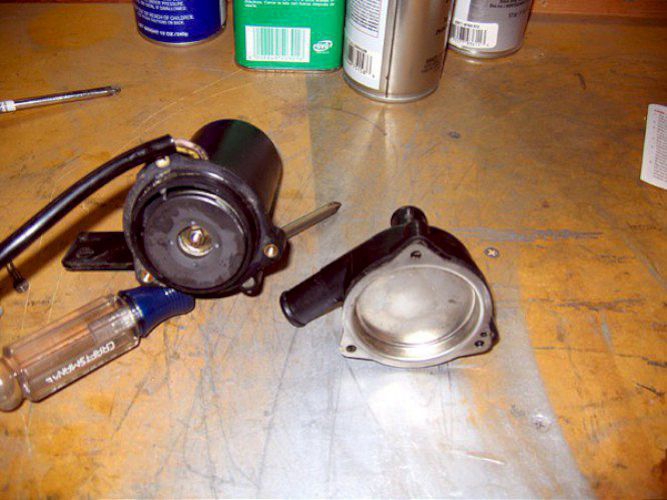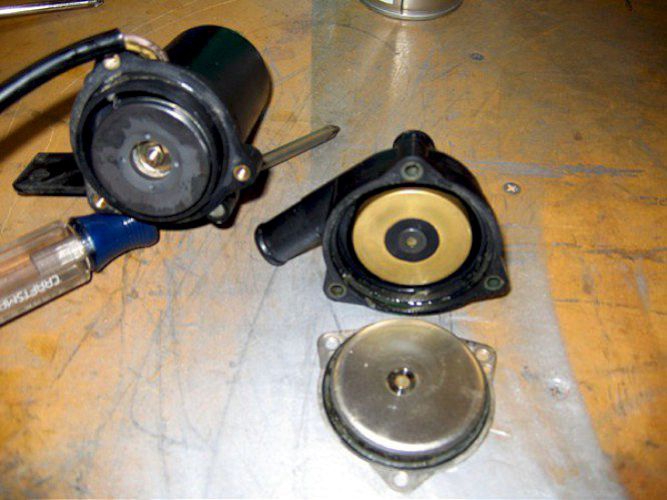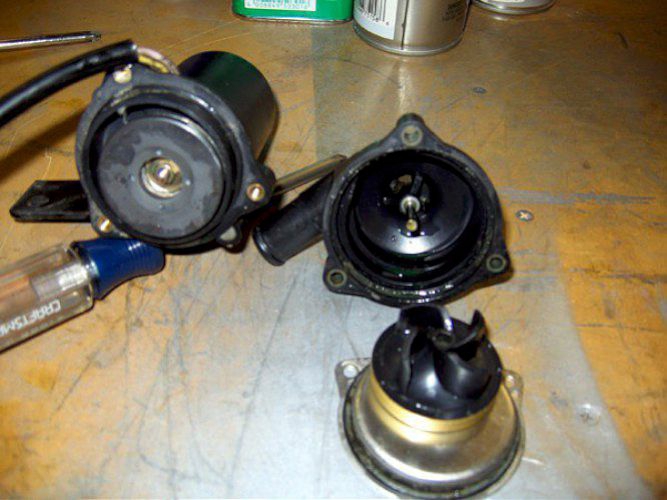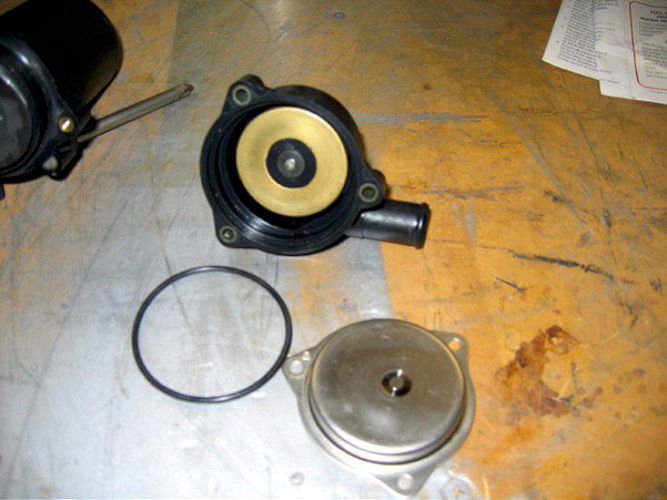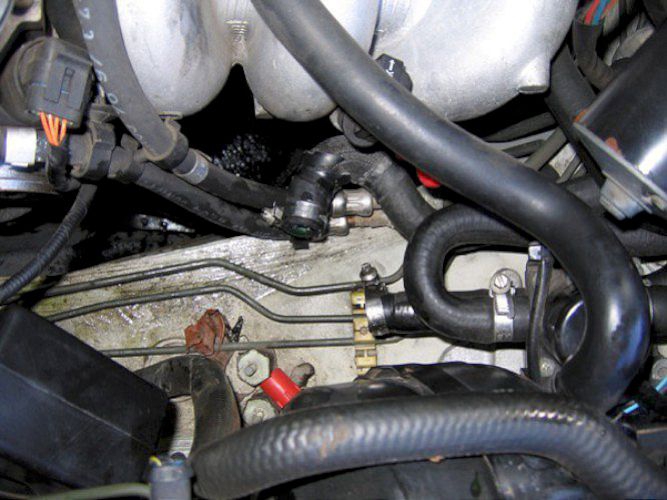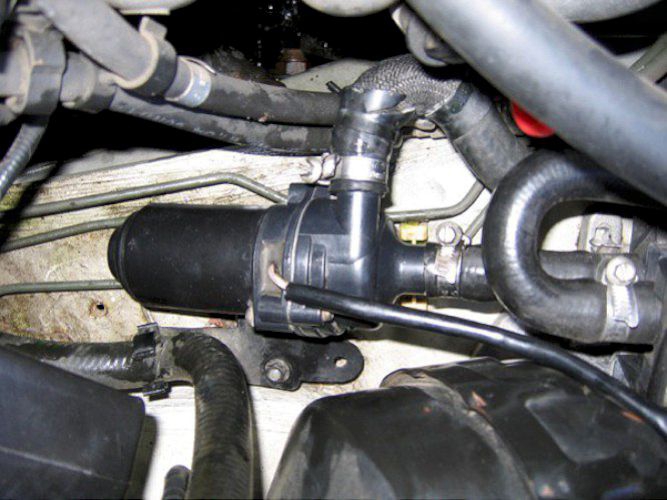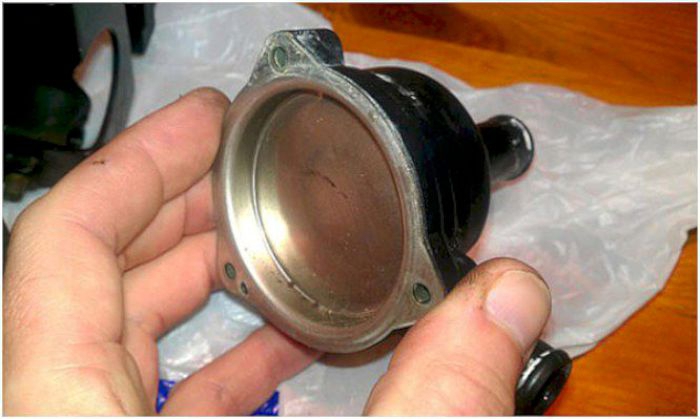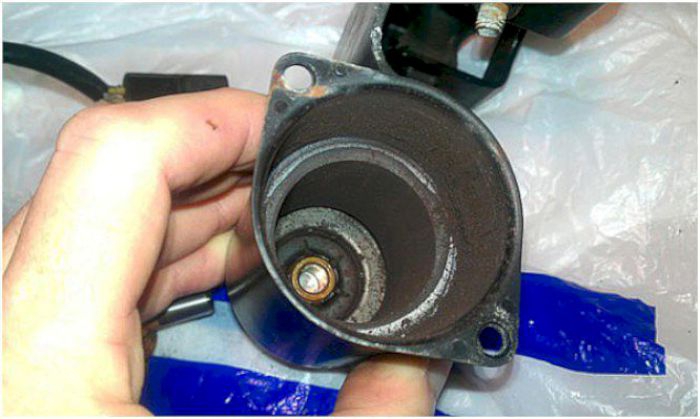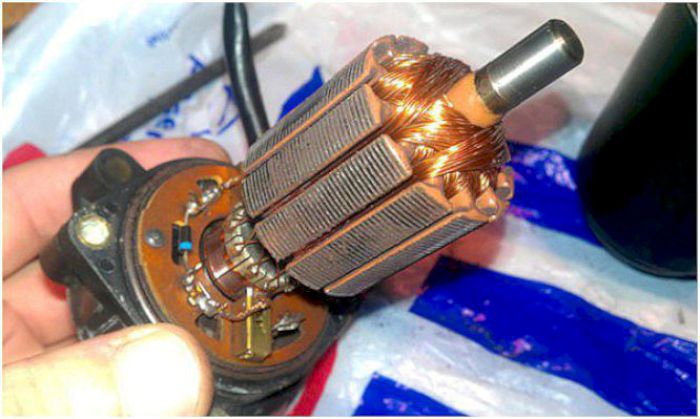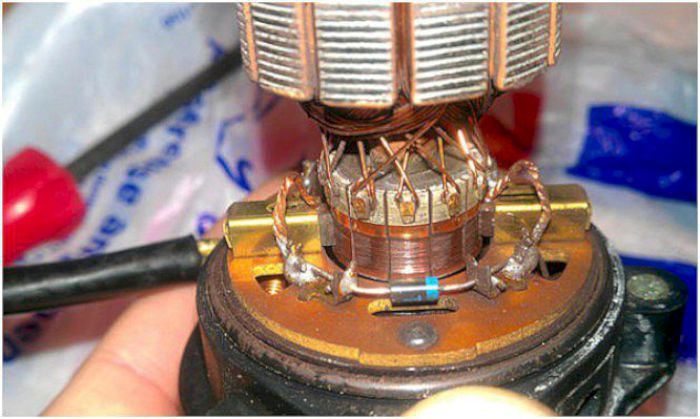Electric Pump for Heater
I haven't done the work myself but the advice and
the pictures below (taken by someone else) are self-explanatory
No heat from heater - diagnosis:
The engine water pump will not circulate significant amounts of water through the heater matrix until the thermostat starts to open. Also, the normal mechanical water pump does not produce much flow below 2000 r.p.m.
The electric pump provides a local immediate path for engine heat to get to the heater matrix regardless of the thermostat position; this is necessary for the climate control to operate properly. See below for photos of heater pump repair.
If you remove the electric pump, depending on your drive, you may get no heat at all if you potter around below 2000 revs, but reasonable heat if you drive fairly fast, say at 60-70 m.p.h., so that the revs are mostly above 2000.
This is also a good way to tell if the electric pump has stopped - if the engine is up to temperature you will suddenly start to get heat after running above 2,000 revs for a little while.
Control of Water flow to the Heater:
Because the flow rate of the engine coolant varies with engine speed, a separate electric coolant pump (see below for pictures) is provided to ensure a stable supply and runs continually when the engine is switched on. When a large amount of heat is demanded, the solenoid valve will remain open, routing coolant into the heater matrix until the desired temperature is reached.
The pump will run even with the impeller clogged as there is no direct mechanical link between the pump motor and the impeller. The impeller is driven by a magnetic coupling and can turn independently of the motor which means the pump won't burn out if the impeller clogs. This pump sometimes fails as the brushes wear out at 120,000 miles plus - replace brushes from a small motor parts store (not Jaguar as they are not listed separately).
Brush size is square section 4mm x 4mm x 8mm long (round off edges to prevent sticking) - another has filed down 5mm x 5mm x 15mm brushes from a shop selling radio controlled models so do check first. I am also told that the brush is much shorter than the housing in order to accommodate the spring. Also the tail on the original brush was attached to the side and runs in a slot, the ones used had it on the top end but with care you can still leave enough slack to take up as the brushes wear.
There are a pair of "T's" moulded into the heater hoses. Only when both the heater pump is running and the solenoid diverter valve is set to allow hot water to flow into the pump's suction will you get heat (assuming the heater core is not blocked).
Because of the "T's", hot water from the cylinder head will simply take the easiest route back to the water pump and bypass the pump and heater matrix if the pump or solenoid diverter is not working.
Under normal running conditions, however, the coolant valve is opened and closed at intervals during a 6 second duty cycle. The length of time the valve is open in each 6 second cycle is determined by the amount of heat required.
To check: ensure fuse 8 which feeds the motor (15amp in left hand engine fusebox) is not blown.
With the car running at normal operating temperature and max temperature selected you should be able to put your hand on the coolant pump and feel it running, however because of the design of it the impeller may not be rotating. It's a fairly easy fix to remove the pump and clean it out.
You should also be able to feel the heater valve cycling open and shut, put you finger on top of it and you should feel the solenoid activate. Again it's fairly easy to remove and clean. In the power off state it is open so unplug it and see what happens.
Backflushing the Heater Matrix:
The two pipes to the heater matrix come through the firewall just left of central, they are aluminium and connect to the heater valve and pump with rubber hoses. If you have flow through the heater matrix both these pipes should be hot. If not you've probably got a clogged heater matrix and the only solution is to change it, which is a big job.
Remove the output hose connection from the heater pump.
Remove the return hose to the heater from the heater valve. (no need to drain the radiator).
Using a garden hose, apply water to the heater hose removed from from the heater valve. This back flushes the heater matrix.
Use a low flow at first and gradually increase it until you can apply full force through the heater core. It should flow as much as you can get into the hose. It's messy and you will get wet - not nice in artic temps. Do this for at least 5-10 minutes.
Reconnect everything and run the engine to temp, after it cools top off the tank, you will find it only takes about a pint of coolant.
